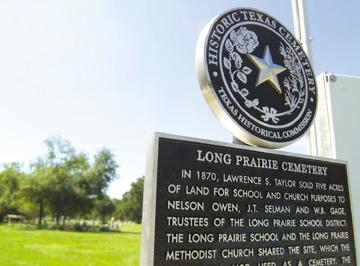|
Alligator
Cemetery Not for Alligators
By Frank X. Tolbert A SIGN ON State Highway 309 in southeastern Navarro County guides you to "Alligator Cemetery, 1/4 mile." The sign also confuses some folks, who think that this is a burial grounds for alligators. Actually, this is just a pretty cemetery in a grove of trees and with a few stands of palmettos on the site of the vanished City of Alligator, Texas, later called Long Prairie. The Alligator Cemetery is east of Round Prairie and Rural Shade. When I stopped at the Alligator Cemetery there was a new Pontiac parked at the iron gate. And off through the great oak trees and the green palmettos and the autumn flowers I saw a lady in a sunbonnet, among the old flat middle 19th century gravestones and shiny new monuments, chopping weeds with a hoe. THE LADY WAS Mrs. S. H. (Lucy Ida Inmon) Phillips, aged 75, of Round Prairie, and she said that her husband, who is 89, was off in a nearby field on their farm running a tractor. "There's an Alligator reunion and cemetery working every Fourth of July," she said. And as she chopped away with the hoe, she added: "Only you can't keep a cemetery nice by just working it on the Fourth of July." The City of Alligator (later Long Prairie) was named simply because it is on Alligator Creek, a tributary of Richland Creek, where there were a lot of alligators in the olden days and a few still make guest appearances. Round Prairie and Long Prairie were so titled because of the contrast of their open terrain with the forests along the creeks. (From a Dallas Newspaper about 1957 - Alligator Cemetery is about 1/2 mile from the home place of Jasper James Inman. Many Navarro Co. Inmons lay at rest here.)
9/1/2004 Cemetery will be honored Saturday
See Also: |
![]() This
Page Last Updated on
07/01/05
This
Page Last Updated on
07/01/05
Navarro County TXGenWeb
© Copyright 2001 Edward L. Williams & Barbara
Knox
